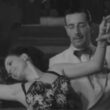The Evolution with influences of Guaguancó, Son, and Style Shifts. A Conversation with Evelyn Hoermann, Sirpa Suutari and Brigitt Mayer
In this conversation, I am joined by Evelyn Hoermann and Sirpa Suutari to explore the fascinating history and transformation of the Rumba. At the heart of our discussion is the contrast of Cuban Rumba vs Square Rumba ~ two distinct approaches that shaped the dance for quite some time.
Evelyn, who began her professional competitive dance career in the 1960s, shares how she first encountered the Square Rumba and how it was interpreted in her time on the competition floor. The Square Rumba, built on the Box Step with the accent on “One,” later gave way to the Cuban Rumba, characterized by the Rock Step and the offbeat emphasis on “Two.”
Beyond comparing Cuban Rumba vs Square Rumba, our conversation also explores:
- The role of Guaguancó (Wawankó) and Son in influencing dance interpretation.
- The cultural journey that carried Rumba from Europe back toward its Cuban roots.
- Archival demonstrations, including Jukka & Sirpa dancing Son, and Evelyn presenting a classic Square Rumba.
Special thanks to Boogalu Productions for providing archival footage. Their catalog is a rich resource for anyone interested in Cuba’s authentic rhythms, music, dance, and culture. 👉 Explore the Boogalu video catalog
This dialogue is more than a look at dance history ~ it’s a way of preserving and re-examining the roots of Rumba. If you have ever wondered about Cuban Rumba vs Square Rumba, this video uncovers how the language of Rumba evolved and why these stylistic distinctions still matter today.
Our exploration of Cuban Rumba vs Square Rumba is still unfolding. The conversation continues as we move further into the rhythms of Cha-Cha-Cha, weaving history with lived experience. In the next part, we will also share rare competitive footage, showing how Rumba was danced on the competition floor in different eras. Stay tuned as we keep tracing the dialogue between social roots, cultural shifts, and performance style.
For more on the shift from Square Rumba to the Cuban System in competitive dance, see “SQUARE vs. CUBED!” by Mark Parkin in DanceArchives. This article offers a complementary perspective: its historical analysis of how competition dancing in the late 1950s and early 1960s began transitioning away from Square Rumba’s Box Step and forward-accented timing, toward Cuban-style rhythms, step structures, and performance character. Including it will give our readers a deeper understanding of how Rumba evolved both socially and in competitive ballroom contexts.










